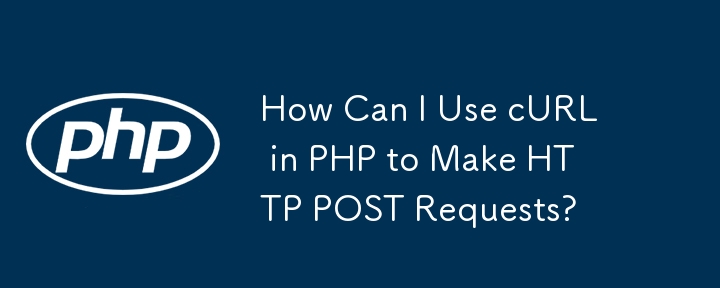Found a total of 10000 related content

How to Send a Raw POST Request with cURL in PHP?
Article Introduction:How to Send a Raw POST Request Using cURL in PHPIn PHP, cURL is a popular library for sending HTTP requests. This article will demonstrate how to...
2024-11-28
comment 0
1094

How to make an AJAX request
Article Introduction:AJAX requests can be implemented in three ways: 1. Use XMLHttpRequest to initiate a request, set parameters through open(), send(), and manually handle errors and responses; 2. Use fetch to initiate a request more concisely, based on Promise, support async/await, and manually judge response.ok, without cookies by default, and POST needs to set headers and body; 3. Use $.ajax() or $.get()/$.post() of jQuery to simplify operations, suitable for existing projects, have good compatibility but rely on jQuery. Different methods are suitable for different scenarios, XMLHttpRequest is suitable for
2025-06-29
comment 0
545
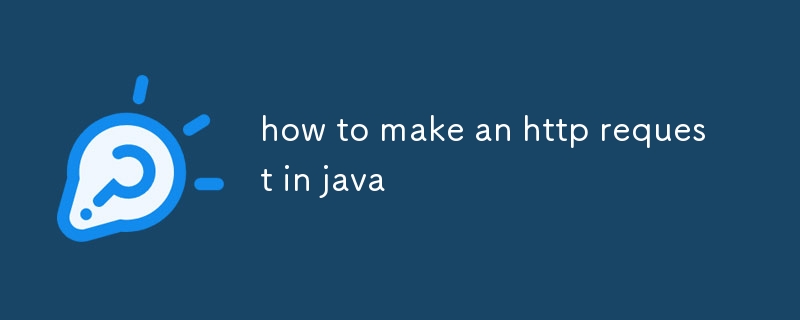
how to make an http request in java
Article Introduction:There are three common ways to initiate HTTP requests in Java. 1. Use the HttpURLConnection class that comes with Java to complete basic GET or POST requests, which is suitable for simple scenarios; 2. The introduction of ApacheHttpClient can simplify operations, support richer functions, and are suitable for enterprise-level projects; 3. Use OkHttp to achieve efficient requests, the API is simple and supports synchronous asynchronous, which is suitable for modern application development. Just select the right tool according to the project needs.
2025-07-27
comment 0
714

Creating Custom Validation Rules in a Laravel Project
Article Introduction:There are three ways to add custom validation rules in Laravel: using closures, Rule classes, and form requests. 1. Use closures to be suitable for lightweight verification, such as preventing the user name "admin"; 2. Create Rule classes (such as ValidUsernameRule) to make complex logic clearer and maintainable; 3. Integrate multiple rules in form requests and centrally manage verification logic. At the same time, you can set prompts through custom messages methods or incoming error message arrays to improve flexibility and maintainability.
2025-07-04
comment 0
1020
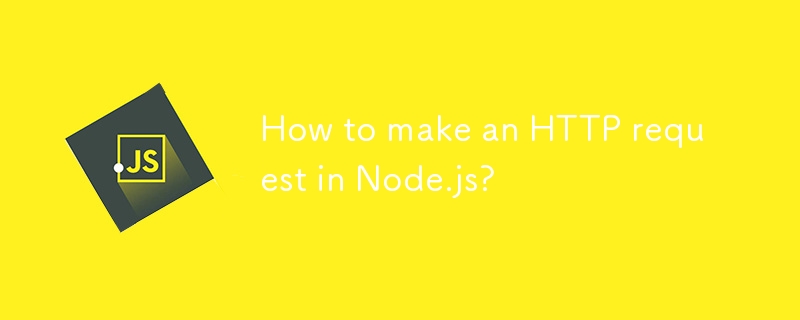
How to make an HTTP request in Node.js?
Article Introduction:There are three common ways to initiate HTTP requests in Node.js: use built-in modules, axios, and node-fetch. 1. Use the built-in http/https module without dependencies, which is suitable for basic scenarios, but requires manual processing of data stitching and error monitoring, such as using https.get() to obtain data or send POST requests through .write(); 2.axios is a third-party library based on Promise. It has concise syntax and powerful functions, supports async/await, automatic JSON conversion, interceptor, etc. It is recommended to simplify asynchronous request operations; 3.node-fetch provides a style similar to browser fetch, based on Promise and simple syntax
2025-07-13
comment 0
1157

How to get client TLS version information in Nginx and PHP-FPM
Article Introduction:This article introduces how to obtain the TLS version information used by client connections by calling external APIs through client JavaScript in Nginx and PHP-FPM environments. This method uses the free API provided by howsmyssl.com, allowing developers to obtain TLS information on the client and send it to the server via GET or POST requests for use in PHP.
2025-08-05
comment 0
517
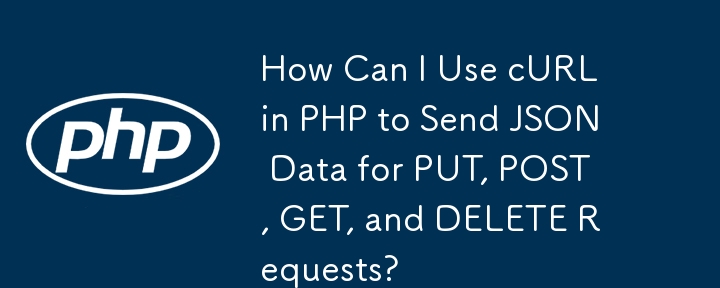
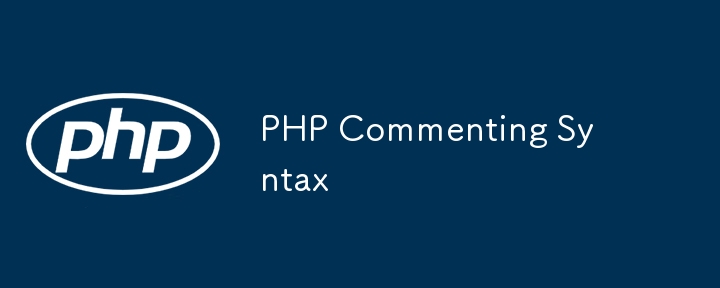
PHP Commenting Syntax
Article Introduction:There are three common ways to use PHP comments: single-line comments are suitable for briefly explaining code logic, such as // or # for the explanation of the current line; multi-line comments /*...*/ are suitable for detailed description of the functions or classes; document comments DocBlock start with /** to provide prompt information for the IDE. When using it, you should avoid nonsense, keep updating synchronously, and do not use comments to block codes for a long time.
2025-07-18
comment 0
663

From Zero to Hero: A Comprehensive PHP Comments Tutorial
Article Introduction:There are three ways to add comments in PHP: //, # and //, among which // is the most commonly used. Comments can improve code readability and maintenance, and should explain "why" rather than "what was done" while keeping it updated. Functions and classes should indicate functions and input and output parameters, and inline comments can be used to explain complex logic. The rational use of comments helps team collaboration and post-debugs to avoid excessive or outdated comments.
2025-07-18
comment 0
602
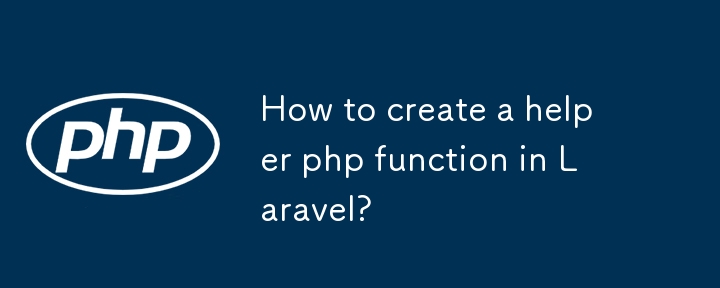
How to create a helper php function in Laravel?
Article Introduction:There are three common ways to create auxiliary PHP functions in Laravel. 1. Use helpers.php file: Create Helpers.php in the app/ directory, write the function, add a path in the autoload.files of composer.json and run composerdump-autoload to implement global calls; 2. Use macroable features: add custom methods to existing Laravel classes such as Collection through the macro() method, which conforms to the framework design style; 3. Create service classes: suitable for complex logic, such as creating HelperService class encapsulation methods and through dependency injection or app
2025-07-22
comment 0
410
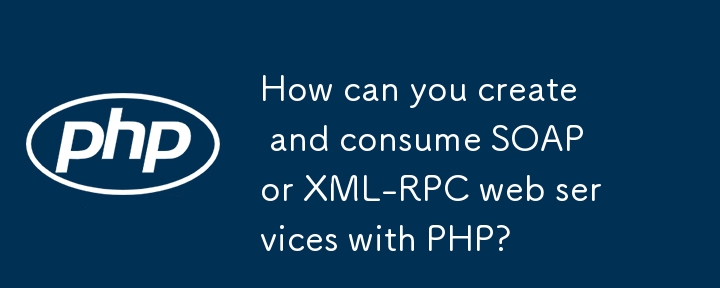
How can you create and consume SOAP or XML-RPC web services with PHP?
Article Introduction:How to create and consume SOAP or XML-RPC network services using PHP? 1. For SOAP services, use the SoapServer class to define processing logic on the server side and generate WSDL files, bind classes or functions to respond to requests; use the SoapClient class to call remote methods on the client side and ensure that the php_soap extension is enabled. 2. For XML-RPC services, you need to use XML_RPC3 and other libraries to register methods on the server side and process requests, and send XML-RPC messages to the client for calls. 3. Common precautions include: enabling necessary extensions, disabling WSDL cache for development, correctly handling errors and exceptions, using debugging tools to view request content, ensuring security and checking
2025-06-07
comment 0
972

How to create a custom validation rule in Laravel?
Article Introduction:There are three main ways to create custom verification rules in Laravel, suitable for different scenarios. 1. Use Rule class to create reusable verification logic: generate a class through phpartisanmake:ruleValidPhoneNumber, and introduce and use it in the controller, suitable for complex and reusable situations; 2. Use closures in verification rules: directly write one-time verification logic in the validate method, such as checking the length of the username, suitable for simple and only once-using scenarios; 3. Add custom rules in FormRequest: add closures or introduce Rule classes in the rules() method of form requests, which are clear and easy to manage; in addition, you can also use att
2025-07-29
comment 0
453

Writing Custom Validation Rules in Laravel.
Article Introduction:In Laravel, custom validation rules can be implemented in three ways. 1. Use Rule::make to create closure verification rules, which are suitable for simple logic, such as checking whether the mailbox has been registered; 2. Create reusable rule classes, generate and implement validate methods through the Artisan command, which are suitable for large projects or multiple reused logic; 3. Centrally manage verification rules and prompt information in form requests to improve structural clarity and maintenance. In addition, error prompts can be customized by using $fail() or overridden messages() method. These methods effectively enhance the readability and maintainability of verification logic.
2025-07-15
comment 0
783
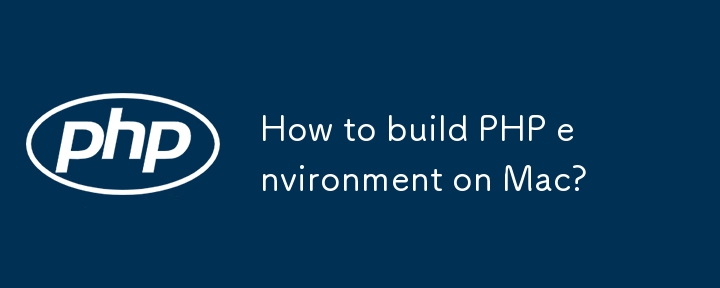
How to build PHP environment on Mac?
Article Introduction:There are three main ways to build a PHP development environment on your Mac: use Homebrew to install PHP, configure Apache or Nginx to run PHP, or use integrated tools such as MAMP and Laragon. First, use Homebrew to perform brewinstallphp or the specified version to install it. If it is a non-main version, you need to manually link it; secondly, you can enable the Apache that comes with the system and modify the configuration file to support the PHP module, or configure Nginx to combine php-fpm to handle requests, pay attention to checking permissions and path issues; finally, MAMP and Laragon provide a one-click integrated environment for graphical interfaces, suitable for beginners, eliminating the steps of manually configuring dependencies. According to technical capabilities and
2025-06-28
comment 0
534

How to implement data signature in PHP? How to generate encrypted signatures in php
Article Introduction:There are three main ways to generate encrypted signatures in PHP. 1. Use hash_hmac for HMAC signatures, and generate signatures through key and hash algorithms (such as sha256), which is suitable for API interface requests and callback verification; 2. Use openssl_sign to implement RSA signatures, using private key signatures and public key verification, which are suitable for high-security scenarios such as payment callbacks; 3. Signing after splicing parameters, which is often used in API interfaces. The parameters need to be sorted according to rules and added with keys to generate signatures to prevent replay attacks. In addition, the signature field is recommended to be unified into sign or signature and transmitted over HTTPS to ensure security.
2025-05-28
comment 0
899
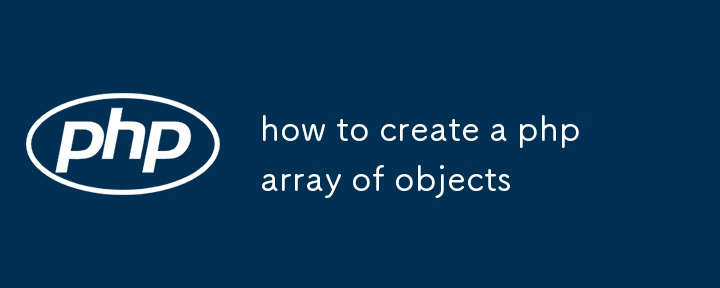
how to create a php array of objects
Article Introduction:There are three ways to create an array of objects in PHP: manually create, construct from database or API data, and use anonymous classes. First, manually create a small amount of fixed data, such as instantiating multiple objects with a class and storing them into an array; second, after obtaining a two-dimensional array from an external data source such as a database or API, convert each piece of data into an object and add it to the array through a loop; finally, for temporary purposes, anonymous classes can be used to quickly generate object arrays, but they are not suitable for complex projects. Selecting the appropriate method according to the actual scene allows you to flexibly create object arrays.
2025-07-06
comment 0
558
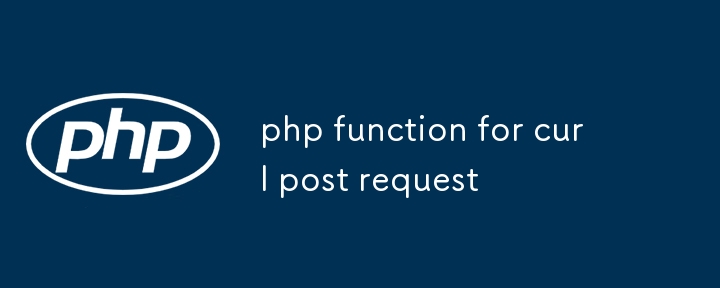
php function for curl post request
Article Introduction:How to send a POST request in PHP? The answer is to use the cURL library. 1. Initialize the cURL handle; 2. Set the target URL, enable return transmission, enable POST method and specify POST data; 3. Optionally set custom request headers; 4. Execute request and process responses; 5. Check for error information; 6. Close the cURL handle. When sending data, you can use array or JSON format. If it is JSON, you need to manually set the Content-Type header; if HTTPS requests encounter SSL certificate problems, you can turn off verification in the test environment, but the production environment should avoid it. Examples include normal form submission and JSON data submission.
2025-07-23
comment 0
873

What is the action attribute, and how do I use it to specify the URL that will handle the form submission?
Article Introduction:In HTML forms, the action attribute is used to specify a server-side script or page that processes form data, that is, to tell the browser to which URL to send user input to when submitting the form. Specific usages include: 1. Add an action attribute to the tag and set it to the desired URL, such as /form-action; 2. You can use a relative path, an absolute URL or a URL provided by a specific service; 3. You need to ensure that the URL exists and supports receiving POST or GET requests; 4. Usually used in combination with the method attribute, it is recommended to use POST to submit sensitive or large amounts of data; 5. If the action is empty, the form will be submitted to the current page, which is suitable for self-processing scenarios such as PHP; 6. Pay attention to the case sensitivity of URLs
2025-06-25
comment 0
208
